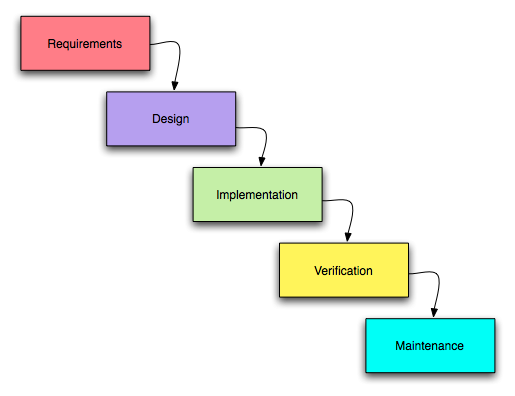Larry Putnam says that "software is the most complex undertaking ever attempted by the human race.[1] Wordnet defines model as "a hypothetical description of a complex entity or process" and process as "a particular course of action intended to achieve a result".[2][3] In other words, a software development process model is an approximate description of a complex set of actions resulting in working software, produced on-time and within budget.

A decades-long goal has been to find repeatable, predictable processes or methodologies that improve productivity and quality. Some try to systematize or formalize the seemingly unruly task of writing software. Others apply project management techniques to writing software. Without project management, software projects can easily be delivered late or over budget. With large numbers of software projects not meeting their expectations in terms of functionality, cost, or delivery schedule, effective project management is proving difficult.
Image:Iterative_development_model_V2.jpg
[The spiral model] combines advantages of top-down and bottom-up concepts and was the first model to explain the importance of small, incremental iterations.
[The V-model] combines ...
might need this:
- Boehm, Barry (January 2006). Balancing agility and discipline : a guide for the perplexed. Addison-Wesley. ISBN 0-321-18612-5.
{{cite book}}: Unknown parameter|coauthors=ignored (|author=suggested) (help) - Norman, Donald A. (1990). The design of everyday things (Reprint. Originally published : The psychology of everyday things. Doubleday. ISBN 0-385-26774-6.
See also
editReferences
edit- ^ Putnam, Lawrence H. (2003). Five core metrics : the intelligence behind successful software management. Dorset House Publishing. ISBN 0-932633-55-2.
{{cite book}}: Unknown parameter|coauthors=ignored (|author=suggested) (help); Unknown parameter|month=ignored (help) - ^
Miller, George. "WordNet Search for model". Cognitive Science Laboratory, Princeton University. Retrieved 29 January, 2007.
{{cite web}}: Check|authorlink=value (help); Check date values in:|accessdate=(help); External link in|authorlink= - ^
Miller, George. "WordNet Search for process". Cognitive Science Laboratory, Princeton University. Retrieved 29 January, 2007.
{{cite web}}: Check|authorlink=value (help); Check date values in:|accessdate=(help); External link in|authorlink=
IS GOOD 2 INDERSTAND
See Also
edit- Software_development_process#Process_models
- Software development
- List of software development philosophies
- Some software development methods:
- Cleanroom
- Dynamic_Systems_Development_Method (DSDM)
- Model driven development
- User experience
- Top-down and bottom-up design
- Chaos model
- Evolutionary prototyping
- Prototyping
- V model
- Extreme Programming
- Scrum
- Theory W (software management)
- Crystal clear
- Rational Unified Process (RUP)
- Rapid application development (RAD)
- Model-Based Architecting and Software Engineering (MBASE)
- Risk Management
- Business process reengineering
- CMM, CMM-SW/SE, CMMI
- Objectory
- Evolutionary